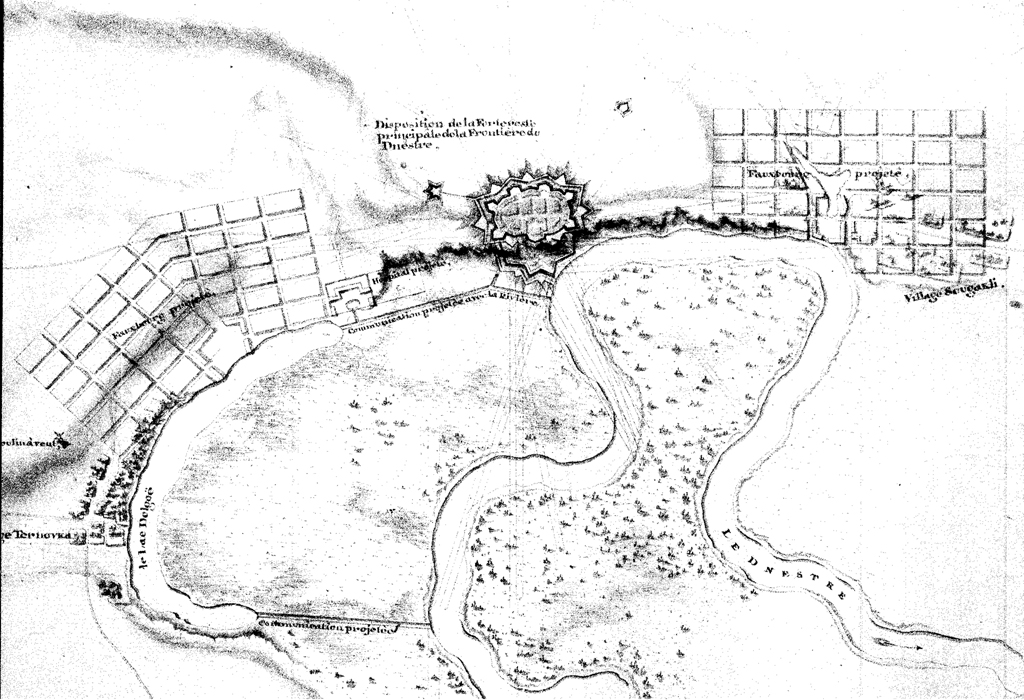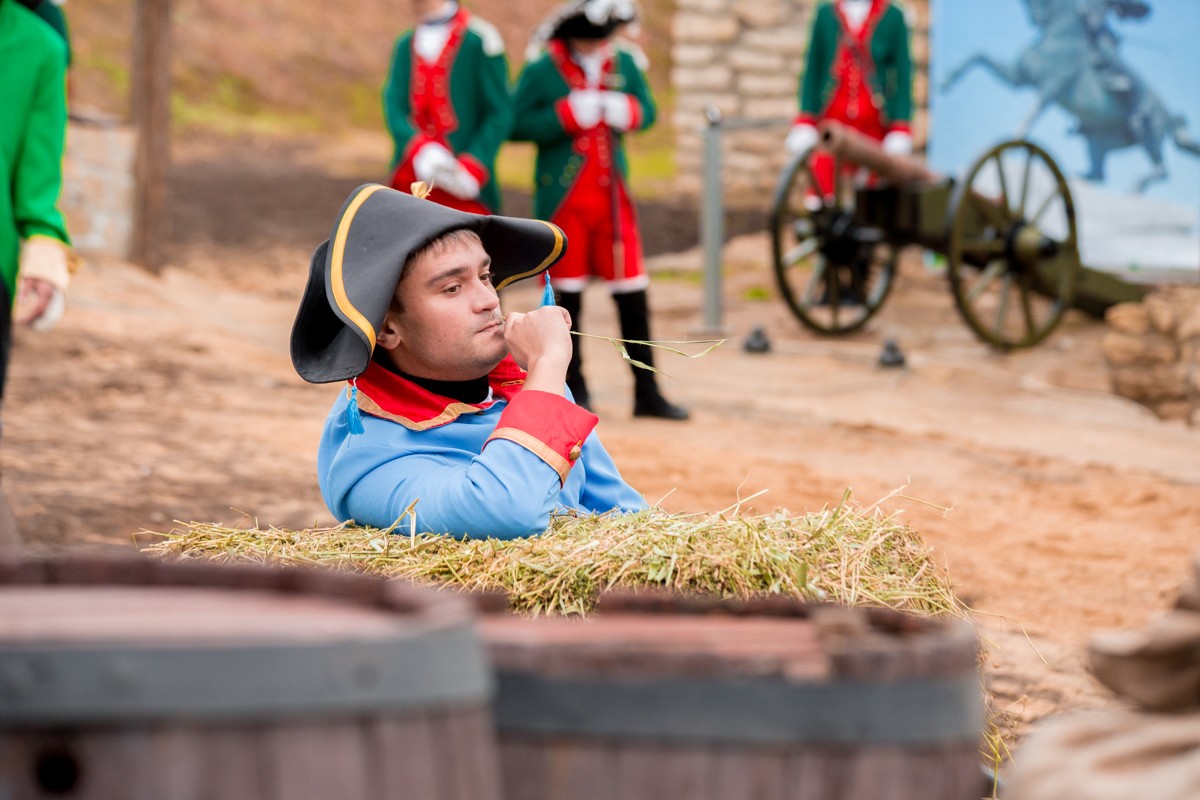Tiraspol, January 27. /Novosti Pridnestrovya/. 225 years ago the name Tiraspol appeared in the official document for the first time. In any case, no earlier documentary evidence has been found yet. Although researchers do not rule out that such facts still could be discovered. To date, historians base their researches on the Senate Name Decree of 27 January 1795 on the establishment of the Voznesensky Province.
“We commend the Province (Voznesensky) to divide into 12 counties, in which district and assigned to the cities of the district have to be (…) 6. Tiraspol at the Median Fortress of Botna's mouth”, - the third paragraph of Catherine Decree said.
From this document, we learn that the vorstadt (fortress town) at the Median Fortress received the status of a city and became a county center. According to the Catherine Decree, Odessa, Balta, Dubossary, Ovidiopol, Grigoriopol were also attributed to Tiraspol County. As can be seen, at that time the city was of great importance and it had to become the center of the Wild West of the Russian Empire.

Medial Fortress Vorstadt
After the end of the Russo-Turkish War of 1787-1791, the area between the Bug and the Dniester rivers called Edison became part of Russia. At the same time, Catherine's government was well aware that a new war with Istanbul could not be avoided in the future, so it was concerned about strengthening the defense of the newly acquired lands. So there was an idea to create a line of defense on the Dniester, consisting of several fortresses with the city districts.
Already in September 1792, the resident of Ekaterinoslav (Dnipropetrovsk) Vasily Kakhovsky reported to the empress proposing to build a fortress at the merger of the Dniester and the Botna. In the documents of that time, the fortress was called Botninsky or Medial, as it occupied an intermediate position between the forts of the Dniester line, which extended from the river Yagorlyk to Ochakov.
The Dutch engineer in the Russian service Franz de Volan designed the fortress itself and its Kronstadt, and the glorified general Alexander Suvorov inspected the progress of the works at that time. The arrival of Suvorov on the Dniester after the recent war with the Turks was a powerful psychological reception: Suvorov himself is on the border, just try to prevent us from mastering the acquired land! Such symbolism can also be seen in the expressive gesture of the monument to the great military commander in the center of Tiraspol. Suvorov, rising on the streams, as if stopping the threat coming from the right bank of the Dniester (in the 18th century of Turkey's possession). And the general's fight with de Volan over the place where the fortress should stand became the first urban legend. The main thing is that it has ended well.

The plan of Medial Fortress
The first builders of Tiraspol
The documents retained interesting information about the first builders and residents of the Kronstadt. These are the Grenadiers (it is no accident that they became heroes of wooden sculptures in Tiraspol), the Eger of the Bug Corps, the fighters of the Polotsk Regiment and the Cossacks . In 1793 they erected fortress shafts with their own hands and built the necessary premises. They were commanded by the commanding general of artillery Ivan Tolstoy, who had quartered at that time in Parkany.
The information has also been preserved about the first houses of the future Tiraspol. On September 9, 1793, the Cossacks “for the construction against the mouth of the river Botna dwellings” allocated 1000 rubles (according to the total estimates it is almost 600 thousand modern Russian rubles).

Antique name
In two years, there was not only a modern fortress but also the first city streets. Most likely, the name of the city appeared before the first official publication. The name Tiraspol by its Greek etymology refers us to the famous Greek project of Catherine II. It assumed that the European lands of the Ottoman Empire would be divided between Russia, Austria and Venice. The capital of Turkey, Istanbul, would be returned to the ancient name Constantinople, and it would become the center of the revived Byzantium; Wallachia and Moldova would unite into the state Dacia; Crimea and Ochakov land (including Pridnestrovie) would be part of Russia.
Only the last point of the plan was implemented. Christian peoples of the Balkans were invited to the new lands of the Wild West of Russia. The region was supposed to be a kind of symbolic haven for all those under Turkish occupation, a new country for the oppressed.
In order to attract colonists to new places, the Government granted them privileges for 10 years in the payment of state gifts and recruitment duties, as well as helped with the development. Thus, the Armenian city Grigoriopolis was established on the territory of Pridnestrovie. There is also the Greek word “polis”, and it's no accident. In ancient times, there were many Greek city-states on the northern coast of the Black Sea, such as Olvia (Albia) and Tyre. The latter was located in the Dniester Delta, which the ancient Greeks called Tiras. In fact, the antique fashion at the Catherine court and the concept of the Greek project played a major role in the appearance of the name for the city at the Middle fortress.

Museum of Tiraspol Fortress in the powder cellar of St. Vladimir 's bastion
The first residents of Tiraspol
As early as 1795, according to research, there were 2,448 men of both sexes in Tiraspol. There were a total of 12,124 males and 10,774 females in the vast Tiraspol county. At the same time, the population grew very quickly. Four years later, in 1799, there were 3,042 (1801 male and 1,241 female) in Tiraspol, 3,435 in Grigoriopolis and 1937 in Dubossary.
The ethnic composition of the city population is also interesting. In the report-presentation to the transformation of the vorstadt at the Median Fortress into the city, it is noted that there were 1,431 Russian (58.5%), 385 Jews (15.8%), 296 Ukrainians (12.1%), 60 Moldovans (2.5%), 269 (11.1%). Already then, Tiraspol was a city of ten nations!
One of Tiraspol's first preserved descriptions was left by writer and senator, member of the Russian Academy of Sciences P.I. Sumarokov, who published in 1800 «A Journey throughout Crimea and Bessarabia in 1799»:
“The new city is built according to the plan by wide streets, has in itself up to 350 yards, and Russian Old Citizens, Small Russians, Moldovans, Valohs, Jews and Gypsies are its inhabitants. Near it there is a large earthen fortress with a strong garrison protects our border and not allow anyone to cross more than half of the river. Tiraspol county extends for more than 198 miles.”
In Tiraspol Sumarokov spent almost 24 hours. He told that in the city there are two public state buildings, 179 houses, 21 stone and 75 wooden merchant shops.
In the documents, you can also learn about the names of the first citizens. Thus, in 1805-1806, the Tiraspol City Duma compiled a statement “Who exactly has the lands belonging to the Tiraspol: gardens, which are meant below.” Among them, we see such people: Petr Evperanov, Aniken Lobov, Miron Popov, Kirill Matroninsky, Parkhom Ivanchenko and several dozen other names.
Around the same time, there is a mention of Balka (the Beam). Nowadays, this word marked the district of Oktyabrsky, and then it meant Sucleia ravine.
It should be noted that the status of the main city had returned to Tiraspol repeatedly. In 1796, it was a county center; in 1929-40 was the capital of the Moldavian Autonomous Soviet Socialist Republic, since 1990 is the capital of the Pridnestrovian Moldavian Republic.



